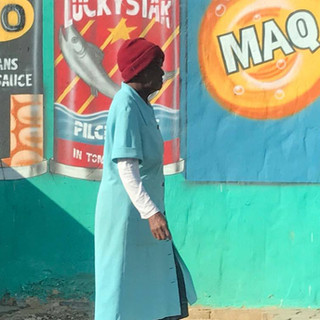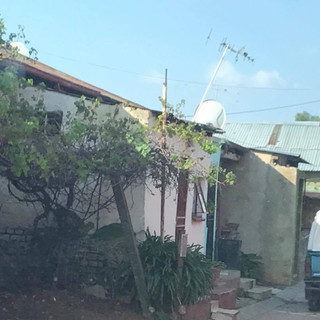Safari
- Janelle Gray
- Nov 29, 2017
- 4 min read

Some people hate the zoo. To them, the idea of observing animals completely controlled by humans seems inhumane. I’ve never worked at a zoo. So, I don’t know if it’s true that some animals are drugged to make it easier for them to be controlled. But they are certainly caged: confined to small spaces, placed behind glass, and put on display.
Before visiting South Africa, the one thing I talked about was the lions. Maybe it’s the movie the Lion King or maybe because I’m a leo. But lions fascinate me. They’re familial and regal. They move with grace and deliberation. So I was completely ready to go to the zoo or on a safari to see the lions. But when my friend said he absolutely wouldn’t take me to see the lions because they drug them, I instantly didn’t want to go either.
But why? I like animals but you won’t see me at a PETA meeting (do they have meetings?). I still eat meat. And we’ve had a long-standing tradition of going to the circus as a family.
Nonetheless, I forewent the opportunity to see the lions. After that simple statement, it just didn’t seem right to pay the captors and feed into this animal enslavement. Instead, we hopped in the car and he took me to see the townships.
If you are like I was, you have no idea what those are. The townships are the American version of the ghetto. But before you quickly move past that, take moment to make sure you understand where American ghettos come from.
I think when most people hear the word “ghetto” in the U.S., they immediately envision a majority-black population in poverty with dirty streets and less-desirable housing. But the term is said to have originated in Venice when they had segregated housing for Jews. In definition, it’s “a part of a city in which members of a minority group live, typically as a result of social, legal, or economic pressure.”
During Apartheid, black people were evicted from areas that were turned to whites only. They were moved to “townships” that were adjacent to these towns. They were on grounds that were not valuable. The soil was not rich and could not be used making them still dependent on communities outside of these townships.
And while the end of Apartheid brought about positive rapid change and growth in some of the townships, the residue of segregation is still left on others. In these areas, many people are not educated past a certain age, poverty still runs rampant as its inhabitants have limited employment opportunity, and these areas are still majority (if not all) black.
I knew why we were there. He told me, “You have to go just to see. You have to know.” When I talked of South Africa in my other article, I talked of what they try to hide: The Africa with its beauty and modern culture; the one they try to convince me is nothing but barbaric, antiquated, and primitive so they can find some sort of comfort in the fact that my people were taken from there.
But the townships are what you see in the commercials. The women barefoot, people gazing from stoops at every passing car; the lack of indoor plumbing and neighborhoods with homes built of spare metals or wood that hardly provide protection from or safety during the storm.
I sat in the back of the car trying to stealthily take pictures so my camera wouldn’t be stolen. Barefoot kids racing carts made from old grocery store buggies, women with babies strapped to their backs, clothes hanging on lines next to portable toilets.
I never shared or posted the pictures I took. It seemed exploitative as a visitor to just post. I had a hard time with it because at some point, in the backseat of the car, it occurred to me: This is no different from going to the zoo.
No, I’m not calling them animals. But go with me for a second. The consequences of apartheid have created a place for containment. Chained by poverty due to a system that refused to adequately educate them, caged by little to no opportunity, and placed in a land deemed invaluable, these people are still forced to perform the everyday tasks of simply being human and surviving. And they do so in conditions I would never consider.
It seemed a little wrong for me to go and take pictures with the intent to share as a depiction of my short 9-day stay. I could give a little money but I would leave and go back to my comfy home, sip wine, and give little to no thought of what I left; all while patting myself on the back for giving a little change.
That’s why I held on to the pictures. I wanted to make sure that I shared them with context. I wanted to frame them, not with the “poor Africa” narrative that’s spread in the U.S., but with the “the consequences of the past are still affecting the present” narrative we keep trying desperately to ignore.
The pictures are important. My friend was right. I did have to go. I did have to see. I had to see the conditions some people are living in.
Donating your time or even your money and food isn’t enough. When you go to these areas of need, take in the living conditions but also consider long-term solutions.
This is not a zoo. These are people. Don’t just roll down your window and offer crumbs from a bucket as you pass through. Don’t just pose and take pictures or take pictures to share in your small groups as a self-gratuitous pat on the back to show you’ve done something.
I’m not saying don’t go. I’m not saying don’t take pictures. But make sure you frame them properly. And make sure the solutions you’re providing don’t end when you leave.
Many times, people don’t need our presence in these places. They need us to help dismantle the social constructs that maintain them. We can’t just pass through.
This is real life. This is not a safari.

















































Comments